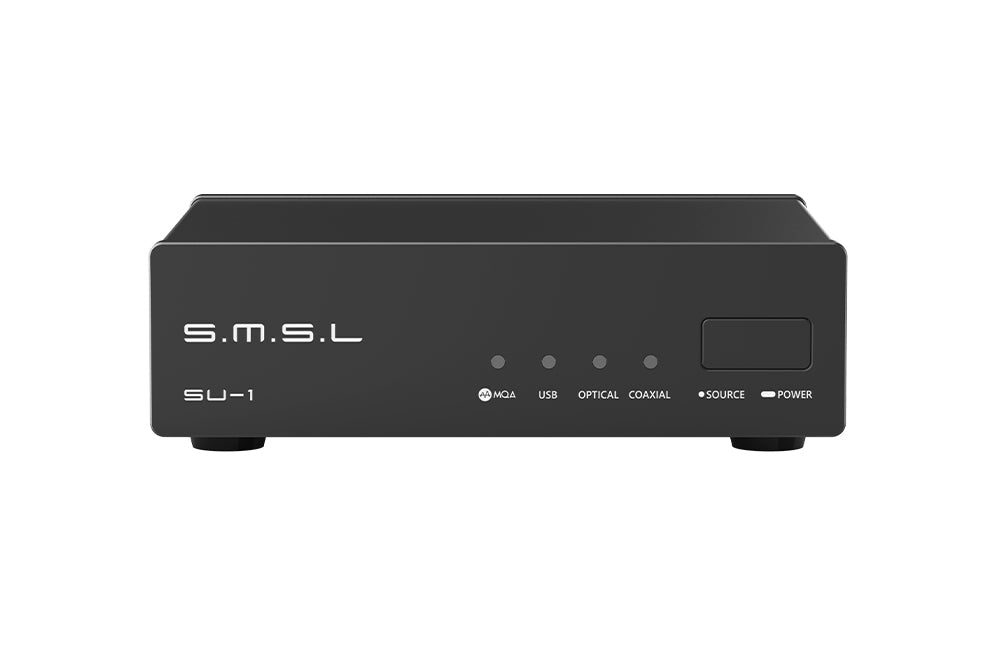SoundDude89
Member
- Joined
- Nov 7, 2023
- Messages
- 11
- Likes
- 3
Hi there,
This problem has been consuming a lot of my time the recent week, and I found out about this forum through googling reviews on various external DAC's, and so I registered here and hope that some of you fine audiophiles might be able to help me out with this problem of mine!
You see, I recently upgraded most of the components of my stationary computer. I got a new chassis, a new motherboard, a new CPU, and new CPU cooler, new RAM and a new PSU. The motherboard is fantastic, save for one thing: the S/PDIF-port is faulty, and occasionally cuts off the audio completely. Other sound devices, such as headphones connected through the 3.5mm jack, works fine. The motherboard in question is MSI MAG Z790 Tomahawk WIFI DDR4. I contacted MSI and the local retailer I bought the motherboard from, and asked them for help in resolving the issue, but no dice.
My setup is this:
2 Bowers & Wilkins 606 speakers
1 NAD C 328 Hybrid Digital DAC Amplifier
These are connected to the motherboard via an optical cable from the S/PDIF-port of the NAD C 328 to the S/PDIF-port on the motherboard.
I think it sounds great, but as mentioned, the motherboard spontaneously cuts off the audio, and only by rebooting the computer is the problem temporarily solved. The version of BIOS and all the drivers are the most recent one.
Apparently this is a common problem with the soundcard on the motherboard, the Realtek ALC4080.
I really like the motherboard, and would like to keep it. I have to bypass the S/PDIF-port on the motherboard in particular to do this though. This would have been easy, if the NAD C 328 had a USB-port, but alas, it does not.
I've gotten the recommendation of buying an internal sound card for the motherboard that I plug into one of its PCI Express ports, though some people claim that these are more or less useless, since they also often seem to have great problems with functioning properly. Others recommend an external, dedicated DAC, which would connect to the computer through USB, and then to the NAD C 328 either through TOSLINK (and thus using the DAC of the NAD C 328), or through RCI.
The last option is what I was going to test out, but I really, really don't want to pay the sum required to fix this solution. What I was recommended by swedish retailer Hifi-klubben was to buy this external headphones amp/dac: PRO-JECT HEAD BOX S2 DIGITAL. I would then connect the HEAD BOX S2 to the computer via USB, and then connect the HEAD BOX S2 to the NAD C 328 through RCA, thus bypassing the sound card of the motherboard and the DAC of the NAD C 328. This will be very expensive for me though, and would cost me a little more than 4000 SEK, or roughly 365 dollars. I'm not to keen on it either, since the DAC of the NAD C 328 may well be better than the DAC of the HEAD BOX S2.
The best, or at least the cheapest solution whilst I keep the current sound quality of my setup, was recommended by a user on MSI:s forum, was to simply to buy a HDMI to optical link converter.
This kind of converter sound great! I can't find any from any retailer I usually buy audio-equipment from though, and so I would like to ask you guys what you think of this solution, and if so, where I can buy a HDMI to optical link converter which you think is a worthy investment.
If this isn't a feasible option, then what would you recommend I do to fix the issue? Sadly, no other motherboard is on the menu. I really like the Z790 Tomahawk, and this problem won't be resolved by simply buying a more expensive motherboard, since they all seem to use Realtek's latest version of their lineup of sound cards, and they all seem to have problems with them functioning properly. If I buy a cheaper motherboard, I miss out on features which I would really like, and for those features the Z790 Tomahawk is a very sweet deal, save for the abysmal functioning of its sound.
Thank you in advance!
Kind regards
EDIT: I guess this is the kind of converter we're talking about? :/
This problem has been consuming a lot of my time the recent week, and I found out about this forum through googling reviews on various external DAC's, and so I registered here and hope that some of you fine audiophiles might be able to help me out with this problem of mine!
You see, I recently upgraded most of the components of my stationary computer. I got a new chassis, a new motherboard, a new CPU, and new CPU cooler, new RAM and a new PSU. The motherboard is fantastic, save for one thing: the S/PDIF-port is faulty, and occasionally cuts off the audio completely. Other sound devices, such as headphones connected through the 3.5mm jack, works fine. The motherboard in question is MSI MAG Z790 Tomahawk WIFI DDR4. I contacted MSI and the local retailer I bought the motherboard from, and asked them for help in resolving the issue, but no dice.
My setup is this:
2 Bowers & Wilkins 606 speakers
1 NAD C 328 Hybrid Digital DAC Amplifier
These are connected to the motherboard via an optical cable from the S/PDIF-port of the NAD C 328 to the S/PDIF-port on the motherboard.
I think it sounds great, but as mentioned, the motherboard spontaneously cuts off the audio, and only by rebooting the computer is the problem temporarily solved. The version of BIOS and all the drivers are the most recent one.
Apparently this is a common problem with the soundcard on the motherboard, the Realtek ALC4080.
I really like the motherboard, and would like to keep it. I have to bypass the S/PDIF-port on the motherboard in particular to do this though. This would have been easy, if the NAD C 328 had a USB-port, but alas, it does not.
I've gotten the recommendation of buying an internal sound card for the motherboard that I plug into one of its PCI Express ports, though some people claim that these are more or less useless, since they also often seem to have great problems with functioning properly. Others recommend an external, dedicated DAC, which would connect to the computer through USB, and then to the NAD C 328 either through TOSLINK (and thus using the DAC of the NAD C 328), or through RCI.
The last option is what I was going to test out, but I really, really don't want to pay the sum required to fix this solution. What I was recommended by swedish retailer Hifi-klubben was to buy this external headphones amp/dac: PRO-JECT HEAD BOX S2 DIGITAL. I would then connect the HEAD BOX S2 to the computer via USB, and then connect the HEAD BOX S2 to the NAD C 328 through RCA, thus bypassing the sound card of the motherboard and the DAC of the NAD C 328. This will be very expensive for me though, and would cost me a little more than 4000 SEK, or roughly 365 dollars. I'm not to keen on it either, since the DAC of the NAD C 328 may well be better than the DAC of the HEAD BOX S2.
The best, or at least the cheapest solution whilst I keep the current sound quality of my setup, was recommended by a user on MSI:s forum, was to simply to buy a HDMI to optical link converter.
This kind of converter sound great! I can't find any from any retailer I usually buy audio-equipment from though, and so I would like to ask you guys what you think of this solution, and if so, where I can buy a HDMI to optical link converter which you think is a worthy investment.
If this isn't a feasible option, then what would you recommend I do to fix the issue? Sadly, no other motherboard is on the menu. I really like the Z790 Tomahawk, and this problem won't be resolved by simply buying a more expensive motherboard, since they all seem to use Realtek's latest version of their lineup of sound cards, and they all seem to have problems with them functioning properly. If I buy a cheaper motherboard, I miss out on features which I would really like, and for those features the Z790 Tomahawk is a very sweet deal, save for the abysmal functioning of its sound.
Thank you in advance!
Kind regards
EDIT: I guess this is the kind of converter we're talking about? :/
Last edited:




